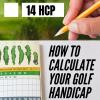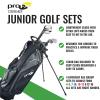How Many Golf Ball Layers do You Need?

Look at a cross-section diagram of a golf ball. There are multiple layers. A thicker cover enhances the durability of the ball and its appearances. But, technically speaking, the cover of the ball creates resistance, which directly affects the ball's performance, since the ball core is the source of it's power. The cover wrapped around the core will restrict it's performance from reaching its full potential. However, the inside layers are also key factors in the ball's performance.
The Engine of a Golf Ball: The Core
Let's start with the core. The internal structure of a golf ball is a crucial element in determining its quality. The golf ball core is a key factor in determining the distance and the feedback from hitting. Competition balls available now can be categorized as dual and multilayered. Currently, dual-layered balls are recommended for use by beginners. On the other hand, multilayered balls are for golfers with low handicaps.
Certainly, the compression of the core directly affects a player's feedback. Balls with higher compression always equate to more ball speed, and vice versa. However, balls are made with the latest technologies to create a new category of lower compression without sacrificing distance. This is perfect for golfers who prefer to play with stickier balls, due to a softer feeling and more control of golf ball responsiveness.
What's the Function of the Mantle Layer?
It absorbs the vibration caused by external impacts and the enormous amount of internal energy released by the large, hard core of the ball. However, more is not always better, since the extra layers will actually eliminate the energy generated by the core.
There are two types of balls you may want to consider: the 2-piece ball and multilayered balls. The configuration in the 2-piece ball, which has a high-restitution core wrapped in a cover, is designed to transfer energy efficiently to the ball in the flight and make excellent distance possible. Some 2-piece balls also have a soft feel to give the user greater control, like FORTÉ SS2 Soft.
The structure of the 3-layer or multi-layer balls are pop. It can be categorized into “double/multilayered covers” or “double/multi-cored”. The double/multilayered cover design will absorb the energy released by the core, whether it is by ejected or pressed technology. Therefore, it can’t have too many layers, or it will affect the performance.
On the other hand, the ultra-thin, double-layered cover brings maximum core potency, and the thickness of the middle layer affects the player’s feel and ball control.
Our approach to attaining the best of both world is through a multilayer design. In fact, FORTE6 has 6-layers with sufficient core deformation when struck with metal woods, which lowers the spin rate, while the higher compression mantle leads to higher short iron spin.











